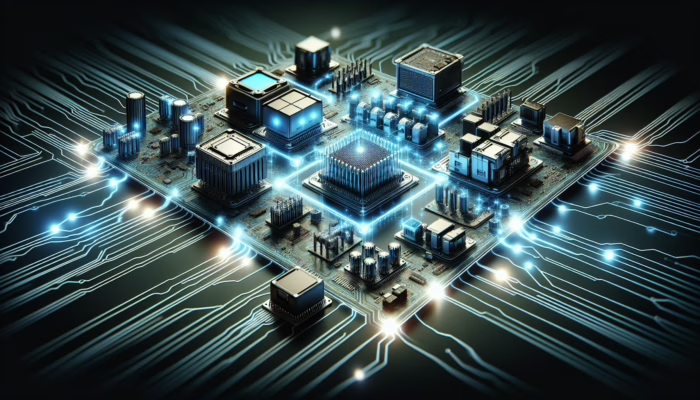Blockchain Secures Hearing Records with a Universal Method
Last Updated on 26/07/2025 by Admin
Revolutionizing Hearing Data Storage with Immutable Blockchain Technology
The advent of blockchain technology has dramatically transformed the storage and management of hearing records, providing unparalleled immutability that enhances the overall reliability of these critical documents. This essential feature plays a crucial role in protecting sensitive legal information, ensuring transparency, and building trust among all participants in the legal process. By utilizing blockchain, we create a secure environment where the integrity of data is prioritized, ultimately benefiting all stakeholders involved in legal proceedings.
Ensuring Data Integrity through Blockchain’s Unique Features

The primary strength of blockchain is its remarkable capability to preserve the integrity of hearing records over extended periods. Unlike conventional databases, where data can be modified or deleted, blockchain technology guarantees that once information is entered, it becomes a permanent fixture of the chain. Each record is cryptographically linked to its predecessor, establishing a secure and immutable history. Therefore, any attempt to modify a record necessitates altering all subsequent entries, an exceedingly challenging endeavor that would likely be detected promptly.
Consider a scenario where vital evidence is tampered with; such actions create opportunities for disputes and jeopardize the integrity of the judicial process. With blockchain, every hearing record remains intact, providing an indisputable source of truth. The unchangeable nature of blockchain isn’t merely a technical merit; it acts as a protective barrier for justice, ensuring that every piece of evidence, testimony, or record is preserved in its original state.
Building Trust Through Enhanced Transparency
transparency is a fundamental element in cultivating trust, particularly in legal contexts. In situations where parties may have opposing interests, blockchain facilitates a system where all stakeholders—lawyers, judges, and clients—can effortlessly verify the authenticity of hearing records. Every participant in the blockchain network has access to the same unaltered information, significantly minimizing the potential for discrepancies and misunderstandings.
This level of transparency nurtures a collaborative atmosphere where accountability is emphasized. For instance, if an attorney needs to refer to a hearing record, they can be assured that it has not been altered since its initial recording. This shared access to verifiable data dramatically reduces the risks of fraud or manipulation, bolstering the credibility of the entire legal framework.
Comprehensive Audit Trails for Enhanced Accountability
Maintaining effective auditing practices is vital for ensuring accountability, and blockchain technology excels in providing detailed audit trails. Every action concerning hearing records—including new entries, access requests, or modifications—is meticulously documented and timestamped within the blockchain. This capability allows legal professionals to thoroughly examine the history of each record, enabling them to trace back discrepancies or investigate any unauthorized access with ease.
Envision the ramifications of such detailed audit trails in a legal setting. Should a dispute arise regarding the authenticity of a record, attorneys and judges can quickly consult the blockchain to ascertain who accessed or modified the record and when. This transparency not only clarifies legal disputes but also acts as a deterrent against unethical conduct.
Implementing Robust Security Measures for Hearing Records

As the digital landscape evolves, the threats to sensitive data also increase. The robust security measures inherent in blockchain technology play a pivotal role in protecting hearing records from unauthorized access and potential data breaches.
Advanced Encryption Techniques for Data Protection
One of the most notable features of blockchain technology is its sophisticated encryption protocols, which effectively safeguard hearing records from unauthorized access. Each record within the blockchain is encrypted, ensuring that sensitive information remains confidential and secure. Only individuals with the appropriate decryption keys—typically authorized personnel—can access the specifics of a hearing, adding an essential layer of security to the system.
In an age where data breaches are alarmingly prevalent, the encryption provided by blockchain offers significant peace of mind. For instance, a legal firm utilizing blockchain to store client hearing records can rest assured that even in the event of a cyberattack, intruders would be unable to decipher the data without the necessary decryption keys. This level of protection is vital for maintaining not only the integrity of legal processes but also the privacy of all individuals involved.
Decentralized Data Security for Enhanced Resilience
The decentralized structure of blockchain technology significantly contributes to improved data security. Rather than storing hearing records in a single, centralized repository, blockchain distributes data across multiple nodes within the network. This decentralization reduces the risk of centralized data breaches, as an attack on one node would not compromise the entire system.
Such decentralization also fosters more resilient data storage. Even if one node becomes inactive or is breached, the other nodes continue to uphold the integrity of the records. This aspect is particularly critical for hearing records, as legal professionals must have access to accurate and complete information promptly, regardless of potential disruptions.
Tailored Access Control to Enhance Data Security

With blockchain technology, access control can be customized to meet the unique requirements of an organization. The system allows for precise access management, ensuring that only authorized individuals can view or modify hearing records. This functionality not only protects sensitive information but also simplifies adherence to data protection regulations.
For example, various roles within a legal firm—such as paralegals, attorneys, and administrative staff—can be assigned different levels of access based on their specific needs. Such tailored permissions guarantee that sensitive information is exclusively available to those who require it to fulfill their responsibilities, significantly minimizing the risk of accidental exposure or malicious intent.
Enhancing Efficiency in Record Management through Blockchain
The integration of blockchain technology in managing hearing records leads to a more efficient and organized system, effectively minimizing errors and reducing administrative burdens.
Streamlined Automated Updates with Smart Contracts
One of the most significant efficiencies achieved through blockchain technology lies in the utilization of smart contracts for automated updates of hearing records. Smart contracts are self-executing agreements with the terms of the deal directly inscribed in code. This means that when certain conditions are met—such as the conclusion of a hearing—updates to records can occur automatically, eliminating the need for manual intervention.
These automated procedures diminish the potential for human error, which is often prevalent in traditional record-keeping practices. For instance, if a hearing decision requires documentation, a smart contract can promptly update the blockchain with the new information, ensuring that all relevant parties are informed and that the records remain current and accurate. This efficiency not only saves time but also enhances the reliability of the shared information.
Seamless Interoperability for Improved Collaboration
Blockchain technology promotes seamless interoperability between various systems and organizations, facilitating smooth exchanges of hearing records. This capability is especially valuable in legal contexts, where multiple parties may be involved in a case, each utilizing different systems to manage their data.
The capacity of blockchain to function across diverse platforms ensures that hearing records can be shared effortlessly, reducing delays and enhancing collaboration. For instance, a court can instantly share hearing records with prosecutors, defense attorneys, and relevant agencies, guaranteeing that everyone has access to the most recent information. This level of connectivity not only improves the overall efficiency of legal proceedings but also fosters a more cohesive legal ecosystem.
Accurate Version Control for Legal Documentation
Maintaining precise version control of hearing records is another standout capability of blockchain technology. As records are updated, previous versions are preserved within the blockchain, allowing for straightforward tracking of changes over time. This feature proves invaluable in legal environments, where the history of document modifications can be as critical as the documents themselves.
In practice, legal professionals can review the progression of a hearing record, understanding how it has evolved and why. This transparency not only assists in resolving disputes but also clarifies ongoing legal processes. The ability to access historical versions of records ensures that all parties can trust the accuracy and authenticity of the information presented.
Enhanced Security through Controlled Access
The secure access control offered by blockchain technology significantly enhances the privacy and integrity of hearing records. By restricting access to authorized personnel only, law firms and other legal entities can protect sensitive information from unauthorized viewing or modification. This feature is crucial for maintaining client confidentiality and ensuring compliance with legal regulations.
For example, within a legal firm, only the lead attorney may possess the authority to modify specific hearing records, while other team members may view them without making changes. This controlled access guarantees that sensitive information is safeguarded while still allowing for collaborative work environments where necessary data is readily available to those who need it.
Immutable Audit Trails for Enhanced Record Management
The inherent ability of blockchain technology to create immutable audit trails adds another dimension of transparency to record management. Every action taken concerning hearing records—whether it’s a new entry, a modification, or an access request—is meticulously logged within the blockchain. This functionality not only enables easy tracking and verification of records but also aids in maintaining accountability.
In legal contexts, the significance of having a clear audit trail cannot be overstated. If a question arises regarding the authenticity of a record, legal professionals can refer back to the blockchain to investigate who accessed or modified the record and when. This level of detail instills confidence in the system, reassuring all parties involved of the integrity of the data utilized in legal proceedings.
Achieving Cost and Time Efficiency with Blockchain
The integration of blockchain technology in managing hearing records leads to noteworthy cost and time efficiency, benefiting legal practices and their clients alike.
Minimizing Paperwork through Digital Transformation
In an age where digital transformation is crucial, transitioning hearing records to a blockchain system significantly reduces the need for physical documents. The approach of blockchain to secure hearing records eliminates the cumbersome paperwork typically associated with traditional record-keeping systems, resulting in substantial cost savings.
For example, legal firms can lower their expenses related to paper, printing, storage, and administrative tasks associated with managing physical documents. Furthermore, the digital nature of blockchain records allows for quicker retrieval and more efficient handling of information, streamlining workflows within legal practices. This reduction in paperwork not only decreases operational costs but also contributes to a more sustainable approach to legal documentation.
Accelerated Access to Critical Information
When it comes to legal proceedings, time is often of the essence. Blockchain technology enables rapid retrieval of hearing records, significantly enhancing overall operational efficiency. Unlike traditional systems, where retrieving documents may consume considerable time due to indexing and manual searches, blockchain allows for instant access to the required information.
For instance, if a lawyer needs to reference a specific hearing record during a court session, they can quickly and efficiently retrieve it from the blockchain. The capability to access records instantaneously not only accelerates legal processes but also empowers legal professionals to make informed decisions in real-time, elevating the quality of legal representation.
Significant Reductions in Administrative Costs
The automation of processes facilitated by blockchain technology can lead to substantial decreases in administrative costs. By diminishing the need for intermediaries and reducing manual handling of records, legal firms can operate more efficiently. Smart contracts can automate routine tasks, such as notifications for upcoming hearings or deadlines for document submissions, freeing staff to concentrate on more complex legal matters.
As legal practices adopt blockchain technology, they are likely to witness measurable cost savings. These efficiencies lead to quicker case resolutions and improved service delivery for clients, thereby enhancing the firm’s reputation and competitive edge in a fast-paced legal environment.
Prioritizing Privacy and Compliance in Legal Practices
Privacy and compliance are critical components of the legal sector, and blockchain technology offers robust solutions to address these essential needs.
Anonymizing Data for Enhanced Privacy
Blockchain technology possesses the capability to anonymize personal data within hearing records, thereby enhancing privacy while preserving the usability of the information. By removing identifiable details, the system ensures that sensitive data remains protected even when shared among different entities.
For instance, in scenarios where hearing records must be shared for research or analytical purposes, blockchain allows for the extraction of necessary data without compromising individual identities. This practice not only complies with privacy regulations but also encourages data-sharing initiatives, ultimately enriching the collective knowledge within the legal community.
Facilitating Regulatory Compliance through Immutable Records
Navigating the complex landscape of data protection regulations can be daunting for legal practitioners. However, blockchain technology can assist in ensuring that hearing records adhere to relevant laws, such as GDPR or HIPAA. The immutable nature of blockchain guarantees that records remain consistent and verifiable, providing a clear audit trail that can be presented to regulatory authorities when necessary.
In this context, legal firms employing blockchain technology can enhance their compliance efforts, thereby reducing the risk of penalties or legal issues stemming from improper handling of sensitive data. This proactive approach to compliance not only protects the firm’s reputation but also fosters trust among clients and stakeholders.
Automating Consent Management for Compliance
Managing consent for the utilization of hearing records is another area where blockchain technology excels. Through smart contracts, legal practices can automate the process of obtaining and managing consent from clients. This ensures that any sharing or use of hearing records is conducted in compliance with privacy laws.
For instance, when a hearing record needs to be shared with another party, the smart contract can verify whether consent has been granted by the client prior to proceeding. This level of control over data sharing reinforces the integrity of the data management process and assures clients that their privacy is being prioritized.
Fostering Trust and Verification in Legal Processes
Establishing trust and enabling verification are essential elements of the legal system, and blockchain technology provides innovative solutions to enhance these aspects.
Verifying Authenticity of Hearing Records
The ability to verify the authenticity of hearing records is critical for mitigating disputes and ensuring that justice is served. Blockchain technology allows all stakeholders to confirm the legitimacy of records with ease. Each entry is timestamped and linked, creating a transparent record that can be audited by interested parties at any time.
For example, if two parties disagree about the contents of a hearing record, they can quickly consult the blockchain to verify the original entry and any subsequent modifications. This capability significantly reduces the potential for fraudulent claims and enhances the overall credibility of the legal process.
Maintaining an Unalterable Chain of Custody
Preserving a clear, unalterable record of the chain of custody for hearing records is crucial in legal proceedings. Blockchain technology ensures that every action taken regarding a record is logged, providing an indisputable history of its handling. This feature is vital for establishing the authenticity of evidence in court cases.
For instance, in a criminal case, the prosecution must demonstrate that the evidence has not been tampered with. With blockchain, the entire chain of custody can be traced, assuring the court of the authenticity of the hearing records presented.
Independent Third-Party Validation for Enhanced Trust
Independent third-party validation plays a crucial role in bolstering trust in legal processes. Blockchain technology enables independent auditors to verify the integrity of hearing records stored on the blockchain. This level of oversight provides an additional layer of assurance to all parties involved.
For legal practices, having an external validation mechanism contributes to a greater degree of credibility. Clients can trust that their records are managed with integrity, while judges and other legal authorities can feel confident in the accuracy of the information presented during proceedings.
Implementing Regular Data Integrity Checks
Conducting regular audits and automated checks is crucial for ensuring the integrity of hearing records on blockchain. These integrity checks identify any discrepancies or unauthorized changes, reinforcing trust among legal professionals. By implementing stringent data integrity protocols, legal firms can ensure that their records are not only accurate but also secure.
In practice, this means that legal professionals can concentrate on their core responsibilities, assured that the technology underpinning their record management is continuously monitoring for integrity. This proactive approach to data integrity not only boosts operational efficiency but also fortifies the foundational trust necessary in the legal field.
Scalability and Accessibility for Modern Legal Practices
As the demand for effective legal record management continues to rise, blockchain technology offers scalable and accessible solutions that cater to diverse needs.
Efficiently Scalable Solutions for Legal Practices
Blockchain technology is designed to scale efficiently, capable of managing large volumes of hearing records without compromising performance. This scalability is essential for legal practices that may oversee thousands of records across numerous cases.
For instance, a corporate law firm managing multiple clients can effortlessly store and retrieve vast amounts of data in real time, ensuring they remain agile in the face of increasing demands. The technology’s inherent scalability alleviates concerns about bottlenecks or slowdowns during peak operational periods, allowing legal professionals to prioritize delivering quality service.
Remote Access Capabilities for Enhanced Collaboration
The accessibility of hearing records stored on the blockchain has transformative implications for the legal industry. Legal professionals can access these records remotely, improving accessibility for all parties involved. In today’s digital environment, the ability to access crucial information from any location enhances collaboration and decision-making.
For example, a lawyer working on a case can retrieve pertinent hearing records while traveling or working from home, ensuring they have the information they need at their fingertips. This flexibility not only boosts efficiency but also supports a modern legal practice that values responsiveness and adaptability.
Seamless Integration with Existing Systems
Blockchain technology can be seamlessly integrated with existing legal and administrative systems, enabling a smooth transition to this innovative approach. Organizations can adopt blockchain without overhauling their entire infrastructure, ensuring minimal disruption to ongoing operations.
This compatibility means that legal firms can capitalize on the advantages of blockchain while maintaining their established workflows. By integrating blockchain technology with their current systems, firms can enhance their record-keeping processes and improve overall efficiency, thereby solidifying their position in a competitive legal landscape.
Anticipating Future Innovations in Blockchain
The future of blockchain technology is promising, with limitless potential for enhancing the legal sector. Innovations such as AI integration are set to revolutionize how hearing records are analyzed and utilized.
Integrating AI for Enhanced Data Analysis
As artificial intelligence continues to evolve, its integration with blockchain technology holds great promise for advancing the analysis of hearing records. AI algorithms can efficiently process large datasets, uncovering insights and identifying patterns that may not be immediately apparent to human analysts. This capability can streamline legal research and inform strategic decision-making.
For example, AI could examine hearing records stored on the blockchain to identify trends in rulings or outcomes, assisting legal professionals in crafting more effective arguments. This synergy between AI and blockchain not only enhances operational efficiency but also elevates the quality of legal representation, ultimately benefiting clients and the justice system at large.
Frequently Asked Questions About Blockchain in Legal Practices
What is blockchain technology?
Blockchain technology is a decentralized ledger system that securely records information across multiple computers, ensuring that data cannot be altered retroactively without consensus from the network.
How does blockchain secure hearing records?
Blockchain secures hearing records through immutability, encryption, decentralization, and access controls, protecting sensitive information from unauthorized access and ensuring data integrity.
What are smart contracts?
Smart contracts are self-executing agreements with the terms of the contract directly written into code. They automate processes, ensuring that agreements are executed when specific conditions are met.
Can blockchain improve legal efficiency?
Yes, blockchain can enhance legal efficiency by automating record management processes, minimizing paperwork, and allowing for expedited access to hearing records.
How does blockchain enhance data integrity?
Blockchain improves data integrity by creating immutable records that cannot be altered, facilitating transparent verification and audit trails of all actions related to hearing records.
What role does encryption play in blockchain?
Encryption plays a crucial role in blockchain technology by safeguarding sensitive hearing records from unauthorized access, ensuring that only authorized personnel can view or modify the data.
Is blockchain technology scalable?
Yes, blockchain technology is highly scalable, capable of managing large volumes of hearing records efficiently without compromising performance.
What are the benefits of decentralization in blockchain?
Decentralization reduces the risk of centralized data breaches, enhances data resilience, and allows for greater access to information across multiple nodes within the network.
How does blockchain ensure regulatory compliance?
Blockchain technology ensures regulatory compliance by maintaining transparent and immutable records, providing audit trails that can be presented to regulatory authorities when necessary.
What future innovations can we expect from blockchain in the legal field?
Future innovations may include AI integration, enhanced data analytics, and improved interoperability between different legal systems, further streamlining the management of hearing records.
Explore our journey on X!
The post Blockchain Secures Hearing Records with a Universal Method appeared first on The Microsuction Ear Wax Removal Network.















































